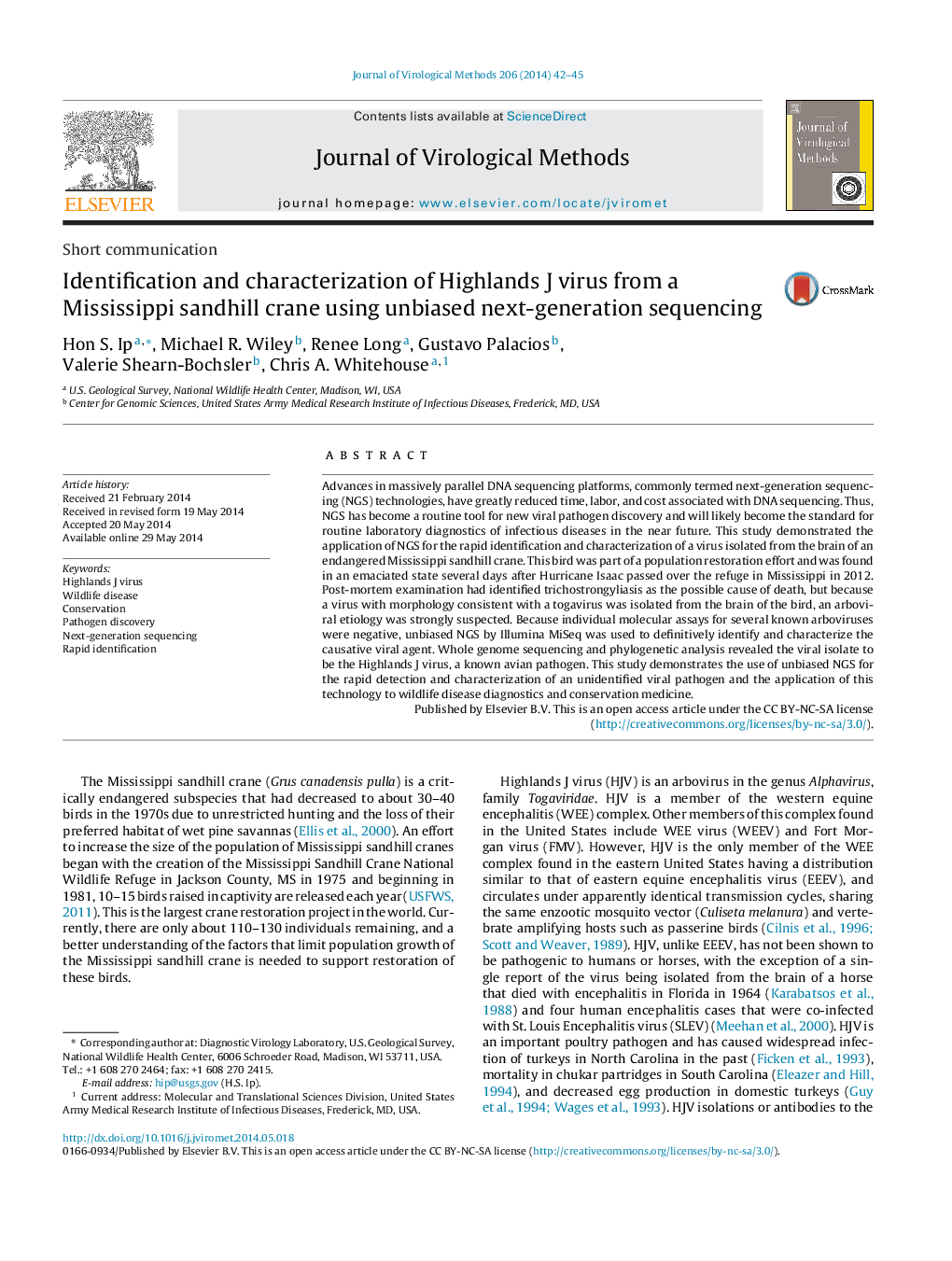| کد مقاله | کد نشریه | سال انتشار | مقاله انگلیسی | نسخه تمام متن |
|---|---|---|---|---|
| 6133564 | 1593470 | 2014 | 4 صفحه PDF | دانلود رایگان |
عنوان انگلیسی مقاله ISI
Identification and characterization of Highlands J virus from a Mississippi sandhill crane using unbiased next-generation sequencing
دانلود مقاله + سفارش ترجمه
دانلود مقاله ISI انگلیسی
رایگان برای ایرانیان
کلمات کلیدی
موضوعات مرتبط
علوم زیستی و بیوفناوری
ایمنی شناسی و میکروب شناسی
ویروس شناسی
پیش نمایش صفحه اول مقاله

چکیده انگلیسی
Advances in massively parallel DNA sequencing platforms, commonly termed next-generation sequencing (NGS) technologies, have greatly reduced time, labor, and cost associated with DNA sequencing. Thus, NGS has become a routine tool for new viral pathogen discovery and will likely become the standard for routine laboratory diagnostics of infectious diseases in the near future. This study demonstrated the application of NGS for the rapid identification and characterization of a virus isolated from the brain of an endangered Mississippi sandhill crane. This bird was part of a population restoration effort and was found in an emaciated state several days after Hurricane Isaac passed over the refuge in Mississippi in 2012. Post-mortem examination had identified trichostrongyliasis as the possible cause of death, but because a virus with morphology consistent with a togavirus was isolated from the brain of the bird, an arboviral etiology was strongly suspected. Because individual molecular assays for several known arboviruses were negative, unbiased NGS by Illumina MiSeq was used to definitively identify and characterize the causative viral agent. Whole genome sequencing and phylogenetic analysis revealed the viral isolate to be the Highlands J virus, a known avian pathogen. This study demonstrates the use of unbiased NGS for the rapid detection and characterization of an unidentified viral pathogen and the application of this technology to wildlife disease diagnostics and conservation medicine.
ناشر
Database: Elsevier - ScienceDirect (ساینس دایرکت)
Journal: Journal of Virological Methods - Volume 206, 15 September 2014, Pages 42-45
Journal: Journal of Virological Methods - Volume 206, 15 September 2014, Pages 42-45
نویسندگان
Hon S. Ip, Michael R. Wiley, Renee Long, Gustavo Palacios, Valerie Shearn-Bochsler, Chris A. Whitehouse,